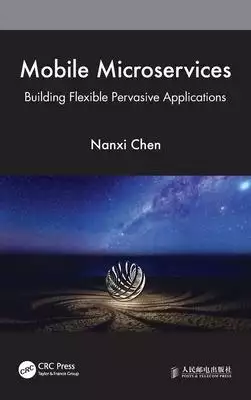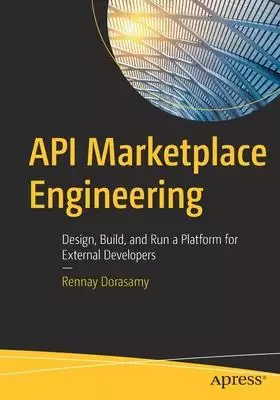Middleware stack的問題,透過圖書和論文來找解法和答案更準確安心。 我們找到下列懶人包和總整理
Middleware stack的問題,我們搜遍了碩博士論文和台灣出版的書籍,推薦Chen, Nanxi寫的 Mobile Microservices: Build Flexible Pervasive Applications 和Dorasamy, Rennay的 API Marketplace Engineering: Design, Build, and Run a Platform for External Developers都 可以從中找到所需的評價。
這兩本書分別來自 和所出版 。
國立陽明交通大學 資電亥客與安全碩士學位學程 吳育松所指導 彭珮婷的 解決基於LLVM的資訊流追蹤對於程式套用流程的挑戰 (2021),提出Middleware stack關鍵因素是什麼,來自於資訊流追蹤、紀錄重播、汙染分析、編譯流程、多行程處理。
而第二篇論文國立清華大學 工業工程與工程管理學系 張瑞芬所指導 魏鈺恩的 機器學習之文字探勘方法與圖卷積網路於B5G行動通訊技術之發展趨勢分析 (2021),提出因為有 B5G、技術探勘分析、專利分析、文字探勘、圖卷積網路、分群的重點而找出了 Middleware stack的解答。
Mobile Microservices: Build Flexible Pervasive Applications

為了解決Middleware stack 的問題,作者Chen, Nanxi 這樣論述:
In the 5G era, edge computing and new ecosystems of mobile microservices enable new business models, strategies, and competitive advantage. Focusing on microservices, this book introduces the essential concepts, technologies, and trade-offs in the edge computing architectural stack, providing for
widespread adoption and dissemination. The book elucidates the concepts, architectures, well-defined building blocks, and prototypes for mobile microservice platforms and pervasive application development, as well as the implementation and configuration of service middleware and AI-based microservi
ces. A goal-oriented service composition model is then proposed by the author, allowing for an economic assessment of connected, smart mobile services. Based on this model, costs can be minimized through statistical workload aggregation effects or backhaul data transport reduction, and customer expe
rience and safety can be enhanced through reduced response times.This title will be a useful guide for students and IT professionals to get started with microservices and when studying the use of microservices in pervasive applications. It will also appeal to researchers and students studying softwa
re architecture and service-oriented computing, and especially those interested in edge computing, pervasive computing, the Internet of Things, and mobile microservices.
解決基於LLVM的資訊流追蹤對於程式套用流程的挑戰
為了解決Middleware stack 的問題,作者彭珮婷 這樣論述:
HIT資訊流追蹤機制是在2017年由Yu-Hsing Hung所提出的動態資訊流追蹤技術,不同於其他現有的動態資訊流追蹤引擎大多基於字節層級且使用內嵌污點傳播所造成應用程式負載急遽增加,HIT在執行應用程式之前使用LLVM分析程式碼來萃取污染語義,將資訊流追蹤從應用程式執行抽離。應用程式只需記錄控制流資訊以及必要的變數值。在之前對 HIT 的評估中,它確實在一些程式測試中有效降低程式執行負載,像是伺服器程式(Nginx, Lighttpd, Redis, Memcached)和 SPEC 2017 benchmarks。但是,沒有證據表明該技術是否可以應用於現實世界中更複雜且常見的應用程式,
例如 Firefox 和MySQL。這意味著我們不知道與現有技術相比,它是否是一種更好、更實用的對於動態資訊流追蹤的解決方案。在本文中,我們旨在將HIT應用於中大型的常見應用程式,對於多程式執行、LLVM Pass於各種應用程式建置流程的套用提出了相應的處理流程,以提高HIT對於適應更廣泛應用的可能性。並且評估HIT資訊流追蹤引擎對於漏洞及敏感資訊流追蹤所遇到的挑戰,將其性能和有效性與其他現有的動態資訊流追蹤工具進行比較。
API Marketplace Engineering: Design, Build, and Run a Platform for External Developers

為了解決Middleware stack 的問題,作者Dorasamy, Rennay 這樣論述:
Rennay Dorasamy has spent the last 20 years in various technology roles, ranging from development to operations to architecture, across a number of industries. He has worked in telecoms, with government, and most recently in financial services. He has considerable hands-on integration experience wor
king on middleware platforms from C-based messaging to Java Enterprise Edition. He is experienced in both core enterprise and digital contexts. As a full-stack engineer, he is intimately familiar with technologies such as containerization, cloud, and serverless technology for building and deploying
mission-critical solutions. He is currently the Engineering Lead of an API Marketplace implementation, the first of its kind in financial services on the African continent.
機器學習之文字探勘方法與圖卷積網路於B5G行動通訊技術之發展趨勢分析
為了解決Middleware stack 的問題,作者魏鈺恩 這樣論述:
Beyond 5G (B5G)是最新的行動網路通訊技術,可以為未來許多產業實現創新發展與應用。對於現有的B5G專利進行分析可以了解現有市場布局,因此本研究主要利用專利來探索B5G的領域知識和商業化技術趨勢,發展基於機器學習的數據分析方法,並以敘述統計輔助分析。對於領域專利進行文字探勘之主題分析與關鍵字萃取,以探索B5G主要技術。並透過圖卷積網路 (Graph Convolutional Network, GCN)來聚合專利特徵與引用關係以生成專利向量,再運用分群演算法為專利向量分群。藉由每一群的關鍵字、主題分布、引用關係與專利數量變化探索主要技術跟分析科技發趨勢,並加強B5G 知識本體結構。
本研究的方法可以對領域專利提取核心的商業化技術與快速了解技術間的關係,並協助生成完整的知識本體以進行知識管理。